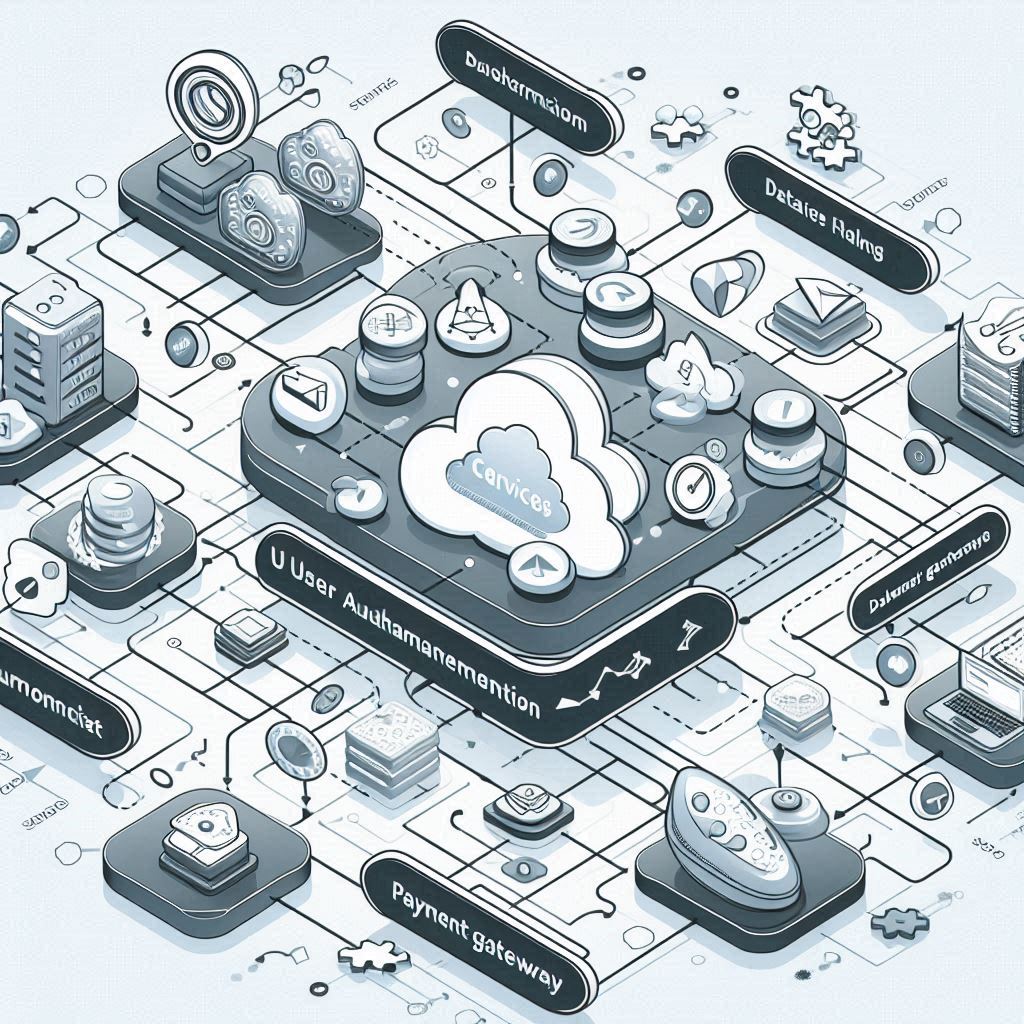
The evolution of web development has pivoted towards creating more resilient, scalable, and flexible applications. This change is largely attributed to the adoption of microservices architecture, a design approach that fundamentally reimagines the construction and deployment of web applications. Instead of relying on a single, monolithic framework, microservices architecture advocates for breaking down applications into smaller, independently deployable services. This paradigm has profound implications for how web applications are developed, deployed, and managed.
From Monolithic to Microservices
The traditional monolithic architecture, where all components of a web application are tightly integrated and deployed as a single unit, has shown significant limitations as applications scale. While projects increase in complexity, making updates or scaling specific functions within monolithic applications can become complex and risky. This realization led to the adoption of microservices architecture.
Microservices architecture breaks away from the monolithic approach, promoting an application structure where each function or service operates independently. This approach allows developers to update, maintain, and scale individual components of the application without impacting the entire system. It brings a new level of flexibility and efficiency to web development, especially for large-scale projects.
In microservices architecture, each service is developed, deployed, and scaled independently. This modular approach means that if a particular service needs updating or encounters an issue, it can be addressed without disrupting the rest of the application. This isolation of services also enhances fault tolerance, as a failure in one service is less likely to bring down the entire system.
Another advantage of microservices is the ability to use different technologies for each service, allowing developers to choose the best tool for each specific task. This can lead to improved performance and scalability, as each service can be optimized individually.
Adopting a microservices architecture also comes with its challenges. It requires a shift in mindset and a change in the development and deployment processes. Developers need to ensure proper communication between services, manage service discovery, and handle potential issues with data consistency and transaction management.
Breaking Down Monolithic Applications
Transitioning from a monolithic architecture to microservices is a complex but necessary task for many growing applications. A monolithic application is a single, unified unit where components are interconnected and interdependent. This architecture can lead to issues in scalability, maintainability, and deployment speed as the application grows. On the other hand, microservices architecture breaks down the application into smaller, independent services, each responsible for a specific business functionality.
The process of breaking down a monolith involves deconstructing the application’s functionalities into these logically independent services. Each service is then developed, deployed, and managed independently. They often communicate with each other through well-defined APIs, which allows for targeted scaling and enhances the maintainability of the application. This decomposition provides flexibility, allowing teams to work on different services concurrently and deploy updates without affecting the entire application.
However, transitioning to a microservices architecture is not straightforward and requires a deep understanding of the application’s domain and careful planning. It is essential to identify natural boundaries within the application where services can be separated without losing efficiency or functionality. Developers must consider data dependencies, latency implications, and the complexity of inter-service communications to ensure a smooth transition.
Another challenge in this transition is managing the increased complexity that comes with multiple services. Developers need to implement proper monitoring, logging, and error-handling mechanisms to maintain the application’s reliability and performance.
Transitioning to microservices also requires a shift in organizational culture and processes. Teams need to adopt DevOps practices, continuous integration, and continuous delivery (CI/CD) pipelines to streamline the development and deployment processes.
The Benefits of Microservices Architecture in Web Development
One of the most compelling advantages of microservices architecture is its scalability. Services are decoupled, they can be scaled independently, allowing for more efficient resource utilization. This means that as certain functionalities experience higher demand, they can be scaled up without the need to scale the entire application. This level of granularity in scaling optimizes resource usage and supports more agile responses to demand fluctuations.
Microservices also offer unparalleled flexibility in technology choices. Each microservice can be built using the technology stack best suited to its functionality, independent of the choices made for other services. This allows developers to experiment with new technologies without committing the entire application to a single technology stack, fostering innovation and ensuring that each service is as efficient and effective as possible.
The distributed nature of microservices enhances application resilience. Since each service operates independently, the failure of one service does not necessarily bring down the entire application. This isolation allows for more robust fault isolation and recovery mechanisms, improving the overall reliability of the application.
Microservices Best Practices
- Design for Failure: given the distributed nature of microservices, designing with the expectation of service failures is critical. Implementing strategies such as circuit breakers can help prevent cascading failures and maintain system integrity.
- Automate Where Possible: automation is important for managing the complexity of deploying and operating microservices. Continuous integration and continuous deployment (CI/CD) pipelines can automate testing and deployment processes, enhancing the overall agility and quality of the application.
- Implement Service Discovery: the number of services grows, and keeping track of them can become challenging. Service discovery tools can automatically manage the location and metadata of services, simplifying inter-service communication.
- Maintain API Documentation: given the interdependence of services in a microservices architecture, maintaining up-to-date API documentation is vital. This facilitates easier integration and communication between services, contributing to more efficient development processes.
- Prioritize Security: the distributed nature of microservices introduces new security challenges, particularly in inter-service communications. Implementing robust authentication and authorization mechanisms for service-to-service interactions is essential for maintaining the overall security of the application.